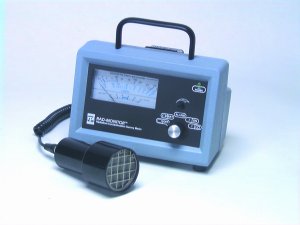University can depend on good-value" radiation monitor"
06/04/2009

Anyone with hands-on responsibility for radiation protection cannot function without a radiation monitor, so they need to be certain that it will perform reliably, day after day.
Trevor Moseley, the University of Sheffield’s Radiation Protection Advisor, has been using Rad Monitors™ since they were introduced onto the UK market by LabLogic Systems six years ago.
"They'’re easy to use and recalibrate, robustly constructed and straightforward to repair," he says. "Better still, they cost less to buy but are just as reliable as other makes."
"Nonetheless, you will always have to replace the occasional broken tube, so after-sales service is an important consideration. Fortunately, LabLogic carries a good stock of spares and give excellent customer service, so you will never be without a Rad Monitor™ for long."
Complementing this fast turnaround service is the company’s rigorous instrument testing programme, which is carried out by a full-time specialist. All monitors are thoroughly checked before first delivery and again after repair, and an annual testing service is also available.
The Rad Monitor™ range offers three Geiger Muller-based models for 14C, 32P, 33P and 35S. The GM1 is a general-purpose monitor, with a 28.5 mm (1.125 inches) tube detector, a 1.5-2.0 mg/cm2window thickness and a unique thin screen that protects the end window; the GM2 has a larger end window (45 mm / 1.75 inches) ideal for detecting soft beta emitters on hands, clothing, and benchtops; and the GM2-P has a pancake probe and a large diameter GM tube for monitoring surfaces.
Also available is the sodium iodide crystal-based SD10, which has a high sensitivity scintillation probe for detecting Gamma emitters such as 125I and 99Te.